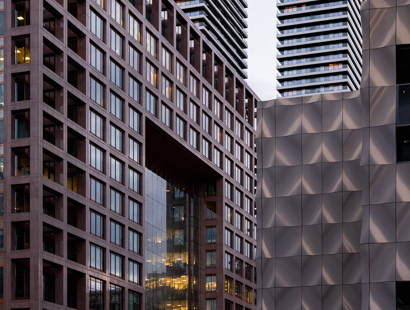
Building Liability Orders: buyers and developers beware
The Building Safety Act 2022 (“BSA”) came into force in April 2022. As the government’s legislative response to the tragic Grenfell Tower fire, the primary focus and much media attention have been on the allocation of liability for remediating historical cladding and building safety defects.
In this article, partner Pauline Lam focuses on one of the controversial measures implemented by the BSA – Building Liability Orders – and relevant considerations for buyers of property holding companies and developers.
Building Liability Order (“BLO”) – what is it and why was it introduced?
As has often been the case with property development, a developer would set up a special purpose vehicle (“SPV”) with little asset for a specific project and then dissolve it on completion of the development. This would prevent meaningful enforcement of any claims against the SPV and protect the underlying developer from liability for defects in the development, amongst other things.
The BLO is the BSA’s answer to address this issue. The relevant provision confers powers on the High Court to “pierce the corporate veil” and place liability on the underlying developer (as well as other companies associated with the SPV) for building safety risks, where the SPV which carried out the development is unable to pay the remediation costs, as well as liability under the Defective Premises Act 1972 and section 38 of the Building Act 1984 (the latter provision has yet to come into force as at the date of this article).
There are three key elements for a BLO claim to be made out:
- the SPV has a potential “relevant liability”;
- the underlying developer or other group companies are “associated” with the SPV;
- the court considers it “just and equitable” to make the BLO.
A “relevant liability” is defined in the BSA as a liability incurred under:
- the Defective Premises Act 1972 (“DPA”);
- section 38 of the Building Act 1984 (not yet in force); or
- as a result of a “building safety risk”.
A claim under the DPA can be brought if it relates to the provision of a dwelling that is unfit for habitation. One of the other provisions in the BSA that has generated much debate is the extension of time limitation within which to bring claims under the DPA. For projects completed before the relevant provision in the BSA came into force on 28 June 2022, the limitation period has been extended from six to 30 years retrospectively and for projects completed after that date, from six to 15 years prospectively.
As mentioned above, section 38 of the Building Act 1984 has not yet come into force. It provides for a cause of action where damage is caused as a result of non-compliance with building regulations.
A “relevant liability” incurred as a result of a “building safety risk” means a liability incurred as a result of a risk to the safety of people in or about a building arising from the spread of fire or structural failure.
The liability can operate as an indemnity against associated entities. In the decision of BDW Trading Limited v Ardmore Construction Limited [2025] EWHC 434 (TCC), it was held that there is no precondition to the making of a BLO that the relevant liability of the SPV has been established: “[i]t makes perfectly good sense to allow a building liability order to function as what might be termed an indemnity (if this original body has any relevant liability in respect of this specified building, this associate shall also have that liability)” .
The BSA also does not require the liability to be quantified before a BLO is made. The case of 381 Southwark Park Road RTM Company Ltd & Ors v Click Andrews Ltd (in liquidation) & Anor [2024] EWHC 3569 (TCC) ruled that whilst it may often be the case that a BLO will be made for an amount, nothing in the BSA requires the liability to be quantified when a BLO is made.
Association
The BSA provides that a body corporate is “associated” with another entity in the following scenarios from the date of the beginning of the development in question ending with the date the BLO is granted:
- where one entity “controls” the other; or
- where a third entity “controls” both the SPV and the party claimed to be “associated” with it.
“Control” is defined in the BSA and broadly concerns ownership and decision-making powers. This would generally cover parent or sister companies in a group structure.
“Associated” entities may also include companies not yet incorporated at the time of the BLO application. In 381 Southwark Park Road it was held that the BSA does not require a party to be identified or joined into the proceedings before a BLO is made “because it may not be apparent that a particular company will be pursued, and which company may be pursued may turn on changeable financial arrangements, or the company against whom the order is sought may not even exist at the time of the original proceedings” .
The "just and equitable" test
The court’s power to make a BLO is discretionary. The Court of Appeal’s decision of Triathlon Homes LLP v Stratford Village Development Partnership & Ors [2025] EWCA Civ 846, which upheld the First-tier Tribunal’s decision that it was “just and equitable” to grant a Remediation Contribution Order (“RCO”) (an order requiring a specified body corporate to pay remediation costs), provided some guidance as to what considerations may be relevant.
In the context of BLOs, although the jurisdiction is different, 381 Southwark Park Road ruled that Triathlon was relevant and that in exercising its discretion, the court is to have regard to the purposes of the BSA and to all relevant factors . Specifically, the court relied on the First-tier Tribunal’s findings in Triathlon as follows:
“The obvious purpose behind the association provisions is to ensure that where a development has been carried out by a thinly capitalized or insolvent development company, a wealthy parent company or other wealthy entity which is caught by the association provisions cannot evade responsibility for meeting the cost of remedying the relevant defects by hiding behind the separate personality of the development company.”
Perhaps most alarming for buyers of property holding companies and developers is Triathlon’s ruling that it is irrelevant if the beneficial ownership of the associated companies has changed and the companies are no longer controlled or owned by the original developer. The First-tier Tribunal’s rationale, which the Court of Appeal upheld, was that the buyer had opted to purchase the company with its liabilities when it could have simply bought the properties held by the company instead and therefore it had made the decision to accept the associated risks:
“When [the associated company] opted to acquire [the SPV] it could instead have taken a transfer of the land and buildings, leaving the liabilities of the developer behind, but it chose not to do so for its own reasons, knowing that it was acquiring not only the assets of the partnership but also its liabilities, including latent and consequential liabilities...In our judgment it is not open to any of them to ask that the timing and circumstances in which they made their investment in those assets be taken into account in determining whether it is just and equitable for the companies in which they invested to be the subject of contribution orders.”
The Court of Appeal accepted that the risk of Parliament enacting “very far-reaching legislation under which the well-resourced parent of a poorly-resourced developer could also be made to contribute without being at fault in any way” was quite unforeseeable. However, it nevertheless upheld this aspect of the First-tier Tribunal’s decision in Triathlon because the ambit of the discretion to make the order is generous .
Key takeaways for buyers and developers
- Unlike other remedies of the BSA concerning remediation costs such as RCOs, applications for BLOs are not restricted to buildings with dwellings or of specific heights. It can apply to buildings with sole commercial or industrial use if there is a risk to the people in or about the building arising from the spread of fire or structural failure. Enquiries in the due diligent process for acquisition of property holding companies should therefore refer to this part of the BSA for all properties of all heights including those without any dwellings.
- Also, unlike the definition of “association” in claims for RCOs and Schedule 8 to the BSA which limits certain remediation costs payable by leaseholders, the period within which an “association” may be found is much wider in BLO claims. Entities formed after the completion of the development in question may potentially be subject of a BLO application.
- Given there are no preconditions for a “relevant liability” against the SPV be established or quantified before a BLO is made, speculative claims may be made in respect of potential relevant liability. To mitigate the risk of speculative claims, it is advisable for buyers to seek appropriate indemnities when acquiring property holding companies. Other ways for developers to mitigate the risk include early and proactive engagement with landlords, leaseholders and other relevant parties to remediate defects.
About Pauline
Pauline Lam is a partner in the property litigation team specialising in property dispute resolution. She advises developers, institutions, businesses, charities and high net worth individuals on property disputes and avoidance. She successfully obtained the first Remediation Order granted under the Building Safety Act 2022 and advises and represents parties in disputes concerning the Act regularly.
Get in touch
If you would like to speak with a member of the team you can contact our property litigation solicitors by telephone on +44 (0)20 3826 7525 or complete our enquiry form.






